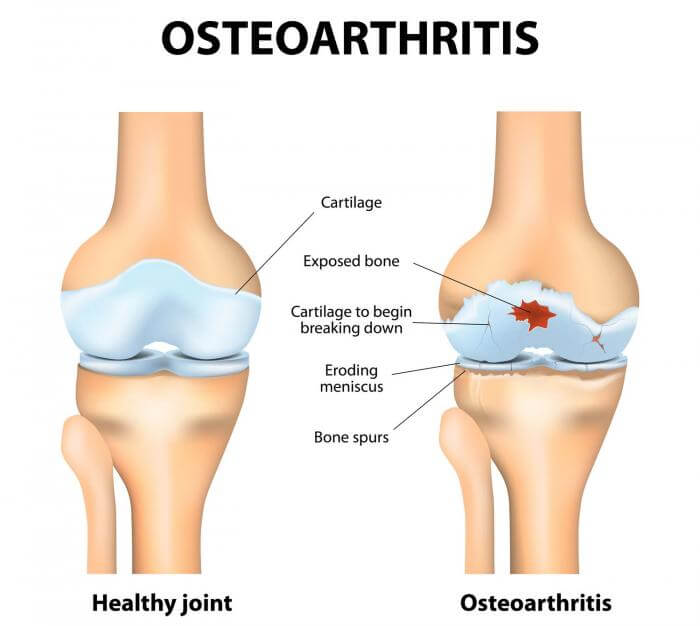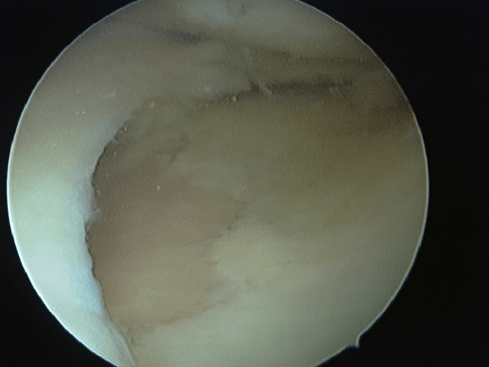
Arthritis
What is arthritis?
Arthritis is the wearing out of the joint surface of the bones that make up a joint. Bones are covered with a lubricating, shock-absorbing substance called hyaline cartilage, which is the soft tissue covering the end of the bones as they form joints. This allows movement, takes impact and protects the underlying bone. This substance can wear away and lead to wear of the joint surface for several reasons.
There are several factors that can contribute to arthritis.
- Genetics
- Wear and tear certainly has a significant role.
- Substances that destroy the joint surface such as smoking will hasten the demise
- If there has been some damage to the joint surface either through a break or other inflammatory conditions such as gout.
- After some surgery, (ie. if a large amount of meniscus has been removed , this puts extra stress on the joint and makes it wear quicker)
Subsequently, as the joint surface wears away it leads to bone being exposed and bone grinding on bone leads to pain. If the joint wears evenly there may be no obvious deformity but just the development of pain, but if it wears more on one side than the other the leg can collapse down on one side more than the other, leading to deformity (either knock-kneed or bow-legged).

What are the symptoms of arthritis?
The first signs of arthritis may be pain. This may not be present all of the time but may just be intermittent in nature. Often the pain will start suddenly, and people believe that something must have happened. However, often a mild discomfort was always there but just came to the patient’s forefront following a traumatic episode. Either way the pain may be intermittent initially after starting motion such as when standing from sitting (start up pain) and then at the end of the day or when trying to sleep. The pain generally becomes present more regularly, particularly when doing more heavy work, and then it becomes more constant.

Increased force placed through the joint will cause more pain. One way to think of the knee, or any joint, is to consider the force put through it as being similar to a tyre on a car. Tyres can wear quicker because of the quality of the rubber and this may be a factor in genetics. It will wear quicker if extra force is placed through it, such towing a trailer, and once the trailer is taken off, the requirement for the tyre’s tread is less and therefore the tyre may hold more grip once the weight is reduced. This is similar to arthritis in the knee. The faster one goes in a car with worn tyres the quicker the tyres lose traction and the less they hold the road. Slowing down in a car (and in a person) the tyres grip better and as such walking slower helps the pain from arthritis in the knee. Going up and down hills requires more traction in a car and as such the tyres wear through quicker. This is the same as when going up and down stairs, leading to more pain in the knee.
How is arthritis treated?
At Glenelg Orthopaedics, we believe that knowledge is the most important factor. Knowing what arthritis is, that it is common, and that it is not a bad thing to have some discomfort helps people both adjust their lifestyle, deal with the symptoms and be aware of how to protect their joint.
Another simple measure is to take the stress off the joint. In the lower limb, this starts with weight loss but also by wearing shoes with shock absorbing soles and using a walking stick in the opposite hand. There are various other types of walking aids which can be quite handy.
Analgesics such as Panadol or Panadol Osteo, progressing through to anti-inflammatories such as Voltaren, may be useful in managing the pain. If required, there are stronger medications available, although these are best prescribed by your general practitioner and should not be used long term.
Anti-inflammatories and other medications need to be taken into consultation with your general practitioner to make sure that there will be no side effects or interactions with other medications you may be taking.
If all of these measures fail, then there are surgical options.
In a younger patient, there are short term surgical options and we might consider changing the force going through the knee by re-aligning the leg. This is called an osteotomy. This puts force through another aspect of the knee and is only suitable should only half of the joint is worn or the person is of a certain body weight. Other options include half a knee replacement called uni-compartmental. In general, however, the vast majority of patients present with arthritis impacting all aspects of their joint, and in this case the best option is a total joint replacement should all non-operative measures be exhausted.
What about an arthroscopy? Is than an option?
There is more and more evidence that an arthroscopy has little or no benefit. If there are associated conditions such as torn cartilages or loose fragments catching in the joint, then debriding (cleaning this out) may help but if the main factors are arthritis then an arthroscopy will not give any long term benefit and may not get any short term benefit. There are some patients who may actually find that their symptoms are worse after an arthroscopy.
One option other than arthroscopy is a steroid (cortisone) injection. This can give short term benefits and can certainly be worth trying on one occasion but does have the risk of infection associated with it. A cortisone injection does come with low risks of side effects, and is unlikely to work long term. As such, if all other simple measures have been exhausted then a joint replacement is the option.
For any further information please contact us to make an appointment to see Dr Nimon.
